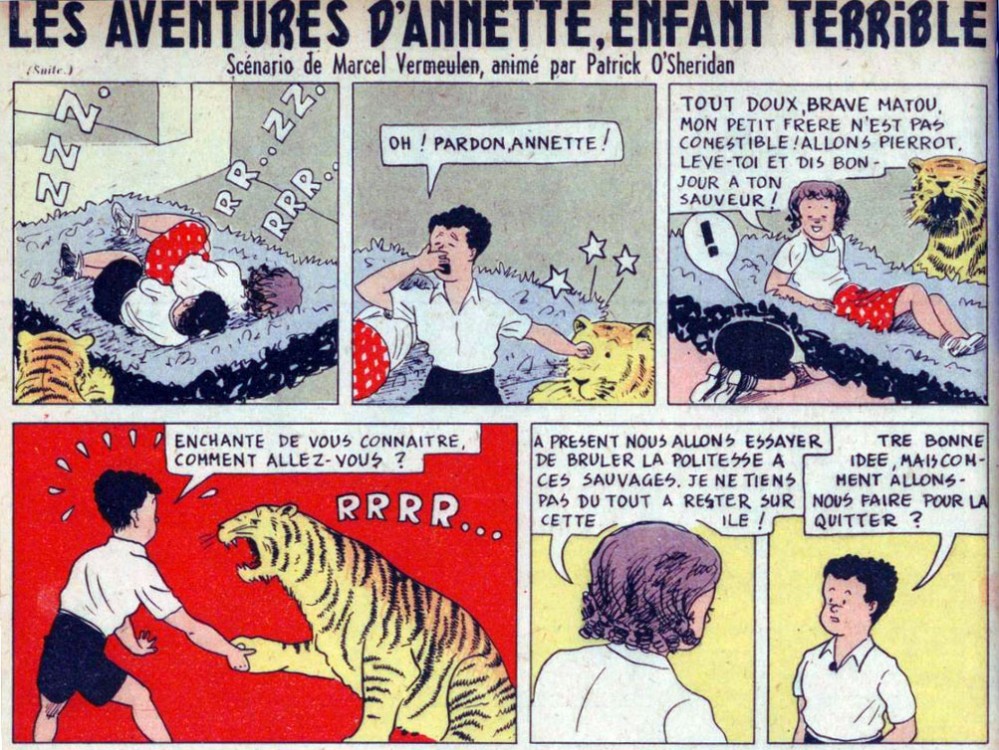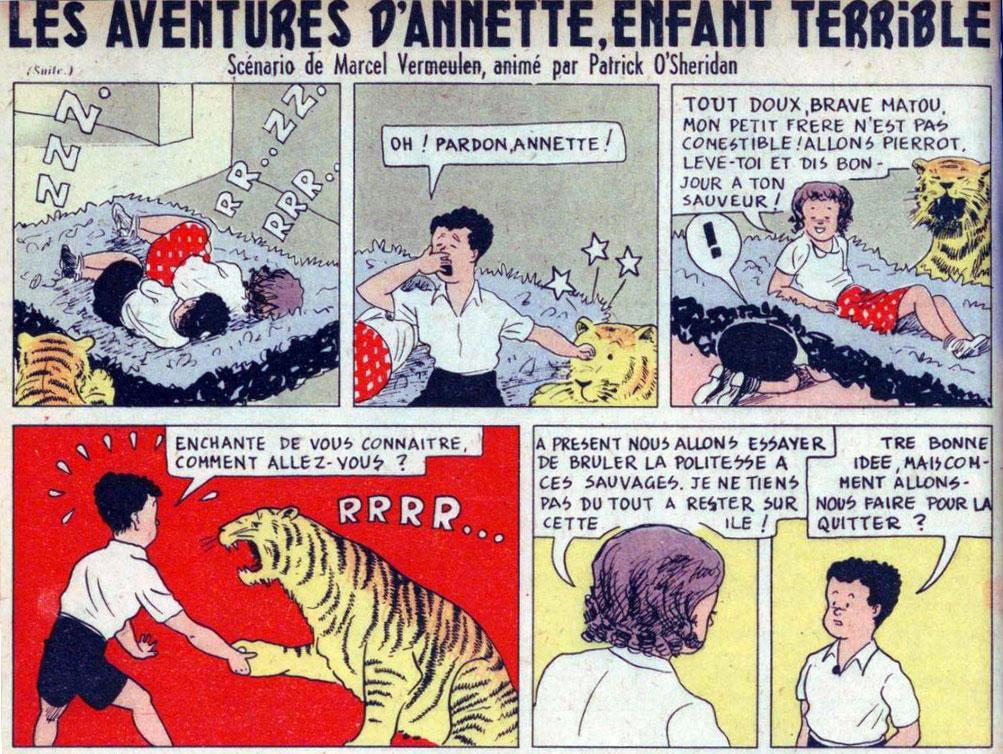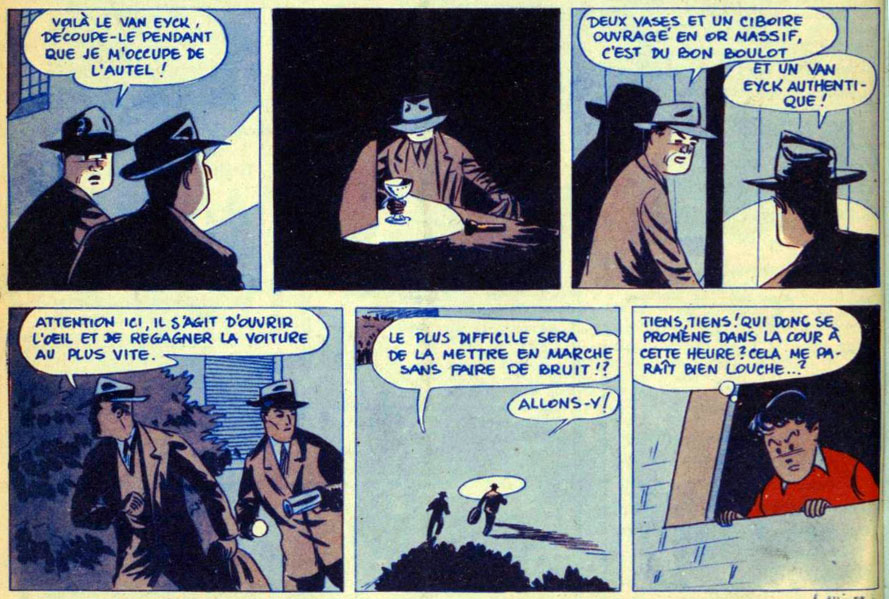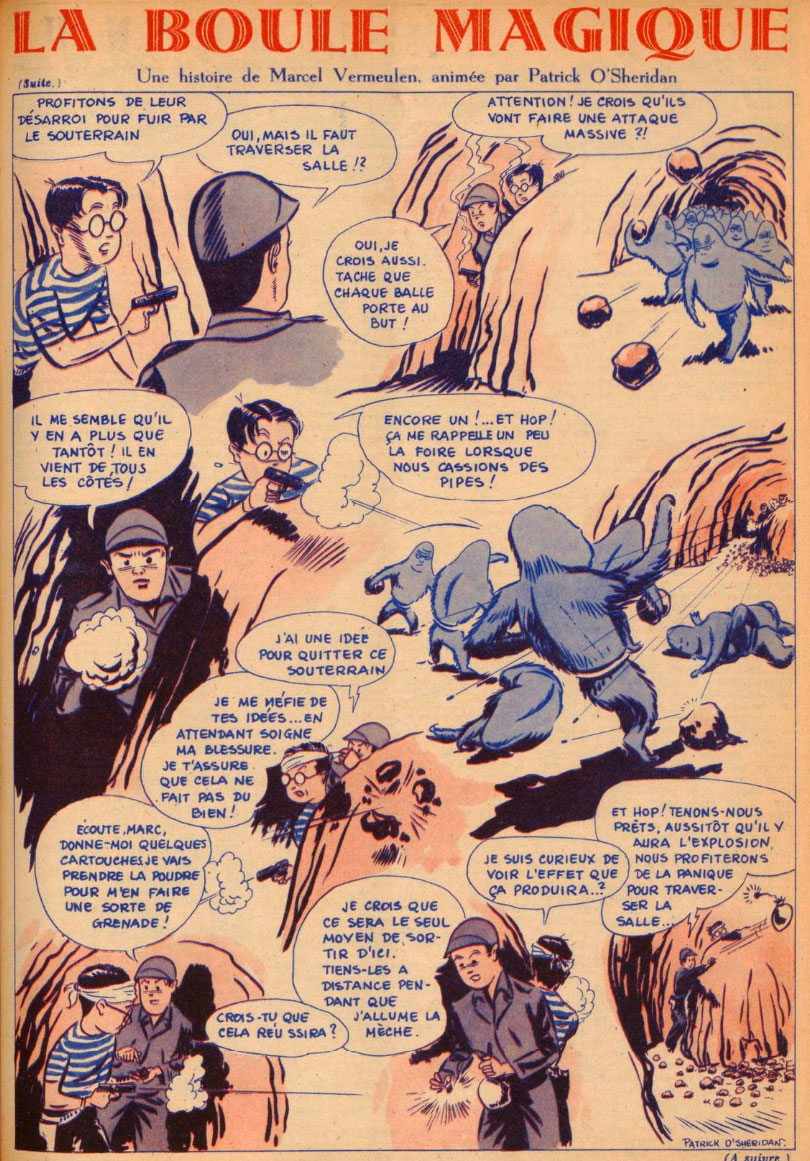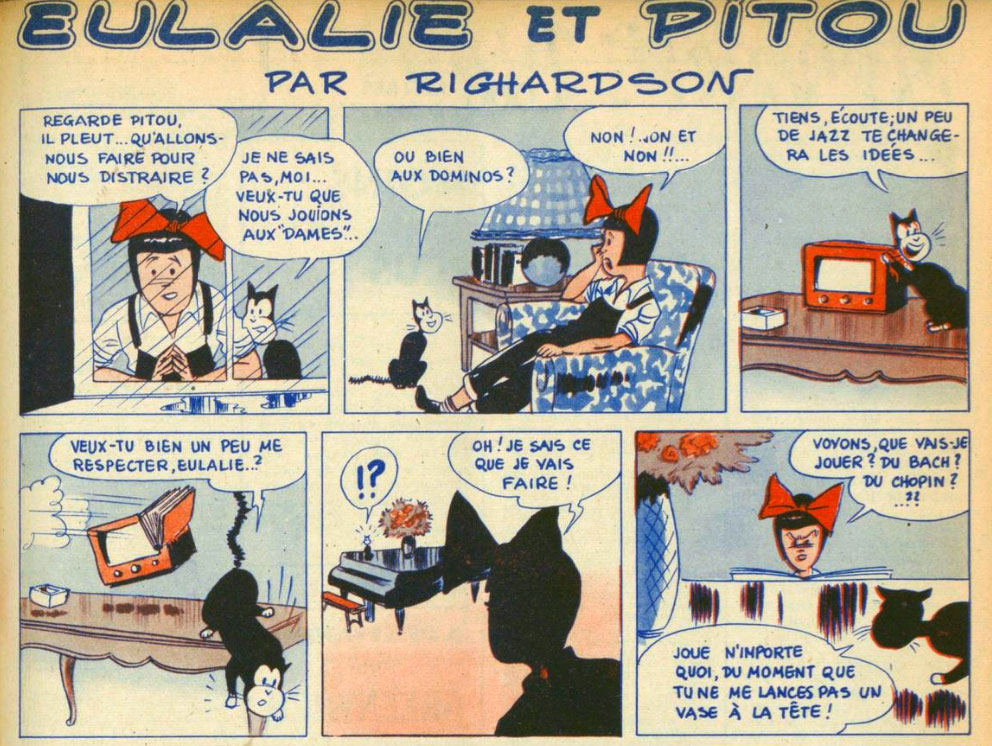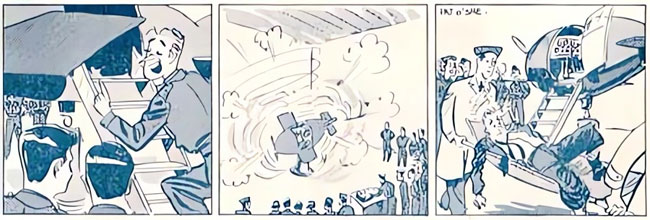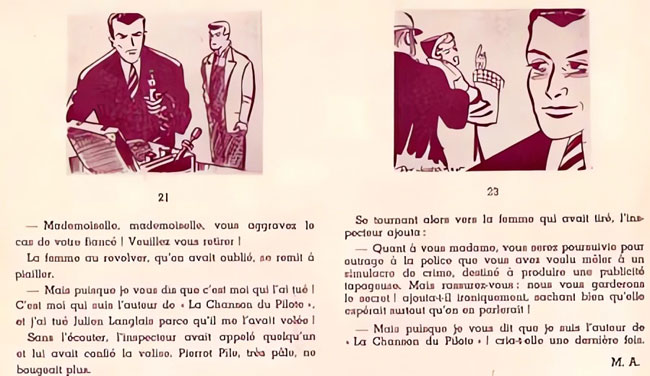'Les Aventures d'Annette, Enfant Terrible' (Annette, 4 October 1945).
Patrick, or Pat, O'Sheridan was an obscure mid-20th century comic artist of unknown origins. In the first couple of years after World War II, he appeared in several Belgian youth magazines and newspapers, notably drawing the title comic of the girls' magazine Annette. He also appeared in the newspaper La Lanterne and Le Soir, as well as the magazine of the Belgian aviation assocation Ailes Brisées. While he seemed a skilled artist with a promising start in Belgian comics, nothing was heard from him again.
Identity
Nothing is known about the background of the comic artist Patrick O'Sheridan, who also signed with Pat O'Sheridan, Pat O'She and Richardson. His activities in the Walloon press were limited to the second half of the 1940s. Was O'Sheridan an anglicized pseudonym for a local artist, or was he indeed a British, Irish or perhaps even American or Canadian soldier who remained in Belgium for an additional couple of years after World War II? Whatever the case, no further whereabouts of the artist are known from after 1950.
'Pat' (La Lanterne, 5 April 1945).
La Lanterne
In 1945, the signature of "Pat O'She" first appeared in La Lanterne, a Brussels newspaper "of national unity and international solidarity". Earlier in its short run, the paper had run the 'Little Dearia' strip, drawn by an unknown artist signing with Sébastien. In five irregular appearances between 4 and 12 April 1945, O'Sheridan's pantomime gag strip 'Pat' presented the slapstick adventures of a common bourgeois man. O'Sheridan also contributed cartoons and illustrations to the paper. Launched shortly after the Liberation of Belgium (September 1944), La Lanterne was the first Belgian post-war newspaper that ran comics, although after May 1945 it turned to American comics like Otto Soglow's 'Little King' and Carl Anderson's 'Henry'.
Annette
A couple of months after his short-lived 'Pat' strip, O'Sheridan became the lead artist of Annette, a weekly magazine for girls edited between 1945 and 1948 by fashion journalist Hélène François. Besides O'Sheridan and a couple of female illustrators (Ketty Muller, Suzanne André), Annette also contained early work by the Belgian comic artists Marcel Moniquet and Fred Funcken, and also by unknown creators like "Hespaty" (AKA J. Frank).
'Annette et Pierrot au College' (Annette, 7 July 1948).
Throughout its run, O'Sheridan worked with scrptwriter Marcel Vermeulen on the magazine's title comic serial, 'Les Aventures d'Annette, Enfant Terrible'. As was common that time period, the adventures lacked a structured plot, but instead brought its main heroes, Annette and her friend Pierrot, from one situation into another.
In the debut episodes, Annette and Pierrot sneak on board of a four-engined air plane ready to break a world record. After an emergency landing, the stowaways have an exciting adventure on a strange island, that hides an underground city of "Red Man". In their second narrative, the two children are in Hollywood to make a film of their previous adventures, when bandits kidnap Annette to lead her to the mysterious island, expecting to find gold there. The third story was situated in a fictional South American country at war and in the fourth narrative, the children have returned home. To make up for their lost schooling, Annette and Pierrot are sent to a boarding school. However, their adventure there is suddenly interruped due to the disappearance of Annette magazine on 7 July 1948.
'La Boule Magique' (Annette, 6 November 1947).
Additional Annette serials
In addition to the weekly title serial, O'Sheridan also contributed additional serials and a couple of gag comic strips to Annette magazine. Between 26 September 1946 and 17 April 1947, O'Sheridan and writer Marcel Vermeulen created the serial 'Le Mystère de la Rue sans Pavés', about a girl called Peggy who helps clear an old vagabond accused of robbing the local jeweler. Then, between 24 July 1947 and 24 March 1948, the O'Sheridan-Vermeulen team created 'La Boule Magique', a comic serial with the accidental space adventures of two boys. Told in an experimental style of visual storytelling - the comic panels have no borders and playfully flow over into each other - the story's trip to the moon was full of weird imagery.
'Eulalie et Pitou' (Annette #47, 1947).
Gag comics
During the entire run of Annette magazine, O'Sheridan also drew the everyday shenanigans of the girl Annik and her kid brother Dicky in a series of gag strips. Another gag page in Annette by Pat O'Sheridan, but signed with "Richardson", was 'Zénobie et Pitou' (19 June 1947-7 July 1948), telling the funny and at times weird bizarre adventures of a girl and her talking cat, Pitou. Later in the strip's run, Zénobie was renamed Eulalie.
'Annik' (Annette, 7 July 1948).
Following the disappearance of Annette, O'Sheridan continued his 'Annik' balloon strip in Ohé Les Jeunes, the weekly youth supplement of the newspaper La Lanterne (8 January-10 December 1949). Between 18 March and 29 April 1950, and again between 5 August and 9 September 1950, 'Annik & Dicky' appeared in two longer serials with two weekly strips in Le Soir.
'Les Aventures de Steve'.
Other publications
Other work by Pat O'Sheridan in the second appeared in Icane, the magazine of the Belgian aviation association Ailes Brisées. Among his contributions were the the strip 'Les Aventures de Steve' and the text comic serial 'La Mort du Chanteur'. Another artist in this magazine was Bizuth. As an illustrator, he provided the drawings for 'Les Aventures de Puce, le Louveteau'/'De Avonturen van Vlooitje, den Welp' (Maréchal, 1945), a scouting children's book written by Maurice Rosseel. Later, for the publishing house Reinaert, he also illustrated a Belgian edition of 'The History of Mr. Polly' by H.G. Wells.
'La Mort du Chanteur'.


